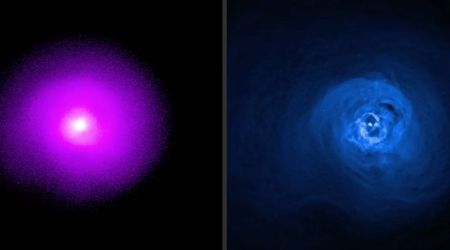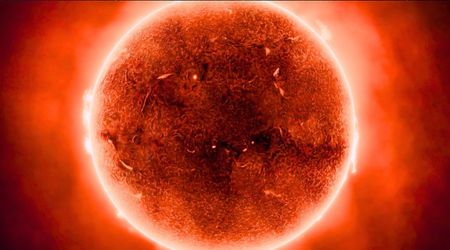The Pleiades

The Pleiades, also known as the “Seven Sisters”, is the most famous of all star clusters. The group is very conspicuous, and has been known and regarded with reverence since early times. It was first mentioned by the Chinese in their annals of about 2300 BC, but the earliest European references are somewhat later, in a poem by Hesiod about 1000 BC and in Homer’s Odyssey.
The myth tells that the Pleiades where seven nymphs, which were saved by Zeus from the pursuit by the giant Orion, by being transformed into a group of doves and placed among the stars. And in the heavens, to this day, Orion still chases the Pleiades across the sky.
To a casual glance, the Pleiades appear as a misty patch, but good eyesight reveals six or seven individual stars and some observers with exceptional eyesight have recorded ten or more under excellent conditions. In all, twenty Pleiads shine at sixth magnitude or brighter, although some are too close to other stars to be resolvable without optical aid. On the next night, try your luck at Pleiades stalking and see how many you can count.
Binoculars and small telescopes bring many more stars into view, covering about one degree of the sky. At least 300 stars are members of the group which lies 400 light years away. The cluster makes its best impression with low-power wide-field type instruments. High powers are absolutely useless on such an object, because the impression of a cluster will be totally lost if only one star can be seen in the field at a time.
Under very clear conditions, some hint of nebulosity may be seen around 4th-magnitude Merope, and this shows up well in long-exposure photographs like the one above. The nebulosity was once thought to be the remnants of the interstellar cloud from which the stars of the cluster formed, but more recent research suggests it’s an unrelated cloud into which the cluster has drifted by chance.









